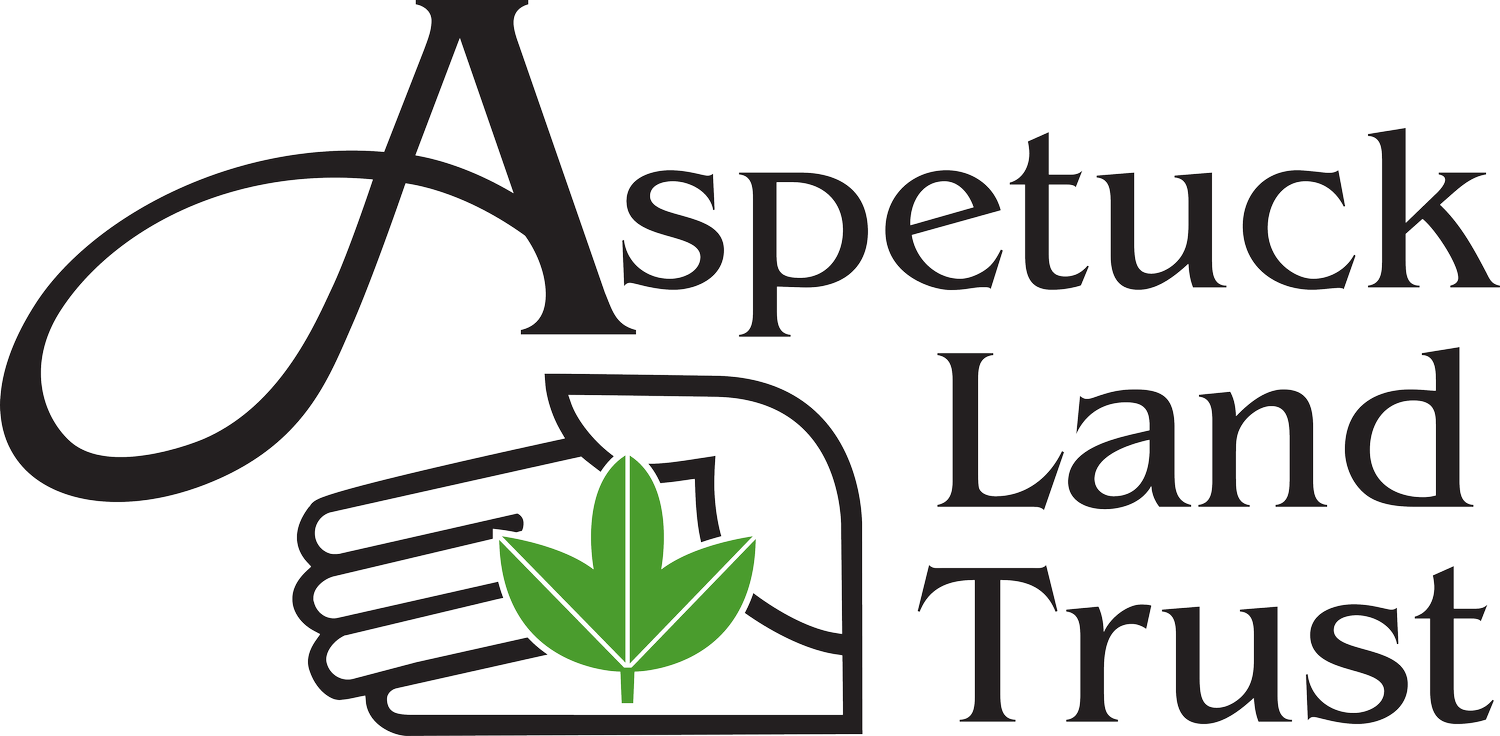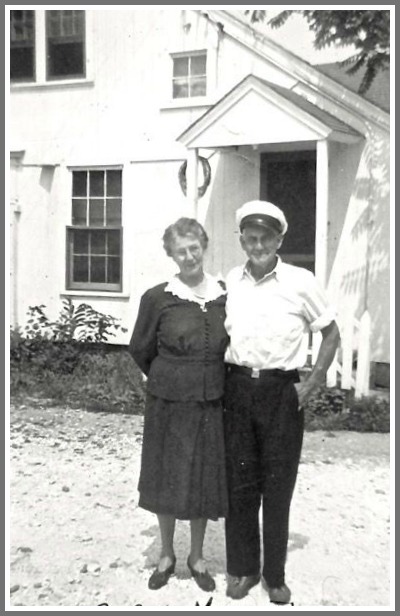Allen Salt Marsh
About:
Captain Walter Allen (far right) with his wife Lida, daughter Beulah, holding his son Walter Ethan Allen (Mary’s future husband). The photo was taken at Allen’s Clam House around 1911.
Located on western side of Sherwood Mill Pond, Allen Salt Marsh was donated to Aseptuck Land Trust by the Northrop family in 1984.
It is named for Walter “Cap” Allen who operated a clam and oyster shack on the banks of the Mill Pond in the early 1900’s with shellfish harvested from beds in the pond. In 1989, Edward Hicks added to the preserve with a donation of over ½ acre of land to help create a beautiful viewing area.
The Northrup family, relatives of Captain Allen, still operate a shellfish operation in the pond today, sending their shellfish to some of the finest restaurants.
Read about the current shellfish operations in the Sherwood Mill Pond here.
Cap Allen and his wife Lida, in front of the clam house.
In high school, Mary clammed at low tide on the mud flats, and sold them to Cap. She also sold horseshoe crabs. He put them in floats where he kept his fresh clams; they kept the water clean.
In the early 1900s, Walter “Cap” Allen opened his clam and oyster shack on the banks of Sherwood Mill Pond. The oysters came from beds in the pond and nearby cove. Cap often hand-shucked them himself. Over time he grew Allen’s into a rustic family eatery.
To learn more about the history of Sherwood Mill Pond and oyster growing in this area click here.
This beautiful salt marsh preserve is non-trailed but offers access for viewing the wildlife and scenery of the spectacular Mill Pond.
Marshes are one of the most biologically productive types of wetland. Seasonal flooding continually adds nutrient-rich water and sediments to marshes. These nutrients nourish plants which, in turn, attract other wildlife. It is estimated that in terms of plant production, marshes are three times as productive as agricultural land and four times as productive as lakes and streams.
In 2017 Aspetuck Land Trust installed 2 new osprey platforms in Westport. These magnificent birds recovered from near-extinction after the government banned DDT.
Trail Stewards:
Heather Walklet
and
Tod Williams
Directions & Parking:
From Greens Farms Road; turn left onto Hillspoint Road; pass over US 95; turn left onto Meadow Lane and follow to Grove Point Road; the salt marsh is on the right by the side of the road. Parking is available roadside at the corner of Grove Point Rd and Meadow Lane.



